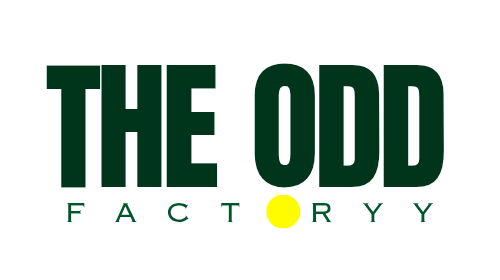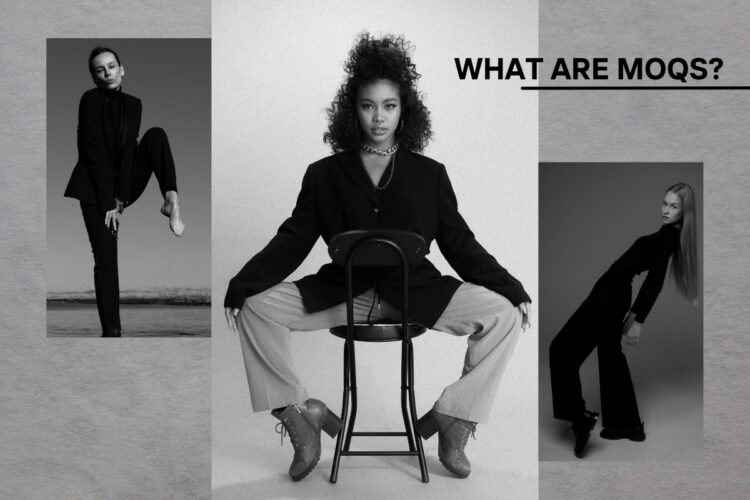In today\’s dynamic business landscape, optimizing resources and managing costs is paramount for companies in the clothing and fashion industry. One essential aspect of this optimization is understanding and effectively implementing Minimum Order Quantity (MOQ) strategies. In this blog post, we\’ll delve into the world of MOQs, exploring their significance for clothing manufacturers, garment manufacturers, fashion manufacturers, wholesale suppliers, and private label clothing manufacturers. By the end, you\’ll have a comprehensive understanding of MOQs and their role in inventory management for these key players in the industry.
What are MOQs?
Minimum Order Quantity (MOQ) is a fundamental concept in supply chain management, especially for clothing manufacturers, garment manufacturers, and wholesale suppliers in the fashion industry. It represents the smallest quantity of a product that a supplier is willing to sell to a customer in a single order. MOQs are typically established to ensure that suppliers can operate efficiently and profitably, considering factors like production capacity, setup costs, and economies of scale.
Importance of MOQs in the Clothing and Fashion Industry
MOQs hold special significance in the clothing and fashion industry for several reasons:
- Cost Optimization: Clothing manufacturers and fashion suppliers can optimize their production and sourcing costs by ordering larger quantities at once, reducing per-unit costs.
- Inventory Management: Effective MOQ strategies help maintain optimal inventory levels, preventing overstocking or understocking issues that can disrupt operations and increase carrying costs.
- Supplier Relationships: MOQs in this industry facilitate better relationships with clothing manufacturers and garment suppliers, ensuring consistent and predictable orders, which can lead to favorable terms and discounts.
- Private Label Manufacturing: For private label clothing manufacturers, MOQs are crucial in establishing the minimum order size required for custom-branded apparel.
What is Minimum Order Quantity in the Clothing and Fashion Industry?
In the clothing and fashion industry, MOQ refers to the minimum amount of a particular apparel item that a clothing manufacturer, garment manufacturer, or wholesale supplier should order to meet demand without incurring excessive costs. It serves as a buffer against stockouts and enables companies to take advantage of bulk purchasing discounts. MOQ helps strike a balance between keeping enough inventory to meet customer demands and avoiding excessive carrying costs.
Benefits of Minimum Order Quantity (MOQ) in the Fashion Industry
Implementing MOQ strategies offers several advantages to clothing manufacturers, garment manufacturers, and fashion suppliers:
- Cost Reduction: Ordering larger quantities at once often results in lower per-unit costs, saving money in the long run.
- Efficient Production: Clothing manufacturers and garment suppliers can optimize their production processes, reducing setup times and operational inefficiencies.
- Improved Cash Flow: Smaller, more frequent orders require more working capital, whereas MOQs allow for better cash flow management.
- Consistent Supply: MOQs ensure a steady supply of fashion items, reducing the risk of stockouts and customer dissatisfaction.
Types of MOQs in the Clothing and Fashion Industry
MOQs can take various forms in the clothing and fashion industry, depending on the nature of the products and the suppliers involved. Some common types include:
- Minimum Order Value (MOV): Instead of specifying a quantity, clothing manufacturers and fashion suppliers may require a minimum dollar amount for each order, allowing flexibility for products with varying prices.
- Minimum Order Line (MOL): In some cases, clothing manufacturers may set a minimum number of different clothing lines or SKUs that must be ordered together to meet the MOQ.
- Minimum Order Weight (MOW): For products sold by weight, such as fabrics, MOQ can be defined in terms of the total weight of the order.
- Minimum Order Pallets (MOP): In industries where fashion items are shipped on pallets, the MOQ may be based on the number of pallets required.
What Influences Minimum Order Quantity (MOQ) in the Clothing and Fashion Industry?
Several factors can influence the determination of MOQs in the clothing and fashion industry:
- Production Capacity: Clothing manufacturers and garment suppliers consider their production capabilities and constraints when setting MOQs. Smaller producers may have higher MOQs due to limited capacity.
- Setup Costs: The costs associated with setting up production equipment or processes can impact MOQs. Larger MOQs may be required to spread these costs over more units.
- Economies of Scale: Ordering larger quantities can lead to per-unit cost reductions, which clothing manufacturers and fashion suppliers may pass on to customers in the form of lower MOQs.
- Demand Variability: Fashion products with highly variable demand may have higher MOQs to ensure that suppliers can manage their production schedules effectively.
How to Calculate Minimum Order Quantity (MOQ) for Clothing Manufacturers and Fashion Suppliers
The formula for calculating MOQ remains the same for clothing manufacturers, garment manufacturers, and fashion suppliers in the industry:
MOQ = (Fixed Costs + Demand Costs) / (Savings per Order)
Fixed Costs include setup, production, and other non-variable expenses associated with manufacturing and delivering apparel items. Demand Costs encompass the cost of holding inventory, including storage, insurance, and interest. Savings per Order represents the reduction in variable costs when ordering larger quantities.
Examples of MOQs in the Clothing and Fashion Industry
Let\’s explore some real-world examples of MOQs for clothing manufacturers, garment manufacturers, fashion suppliers, and private label clothing manufacturers:
- Clothing Manufacturer: A clothing manufacturer may have an MOQ of 500 units for a specific style of jeans to cover production setup costs and secure a bulk discount on fabric.
- Garment Supplier: A garment supplier may establish an MOQ of 1,000 units for a particular type of t-shirt to optimize production and reduce per-unit costs.
- Fashion Wholesaler: A fashion wholesaler might require a minimum order value (MOV) of $5,000 for orders, allowing retailers to mix and match different clothing items to meet the MOQ.
- Private Label Clothing Manufacturer: For private label clothing manufacturers, MOQs can vary significantly depending on the complexity of custom designs and the materials required. An MOQ of 300 units for a custom hoodie, for instance, may be set to ensure cost-effectiveness.
What is the Difference Between MOQ and EOQ in the Clothing and Fashion Industry?
It\’s important to distinguish between MOQ and Economic Order Quantity (EOQ) in the context of clothing manufacturers, garment manufacturers, fashion suppliers, and private label clothing manufacturers:
- MOQ: Focuses on supplier-imposed minimum order quantities that allow clothing manufacturers and fashion suppliers to operate efficiently and profitably.
- EOQ: Focuses on finding the optimal order quantity that minimizes total inventory costs for clothing manufacturers, garment manufacturers, and fashion suppliers, considering factors like carrying costs, ordering costs, and demand variability.
MOQ Mastery: Balancing Efficiency and Demand in Fashion Supply Chains
Minimum Order Quantity (MOQ) is a vital concept in the clothing and fashion industry, impacting clothing manufacturers, garment manufacturers, fashion suppliers, wholesale suppliers, and private label clothing manufacturers. Understanding the importance of MOQs, the factors influencing their determination, and their benefits can help organizations in the fashion industry optimize their supply chain, reduce costs, and maintain customer satisfaction. By implementing MOQ strategies effectively, companies can strike a balance between cost-efficiency and customer demand, ultimately contributing to their long-term success in a competitive market.



